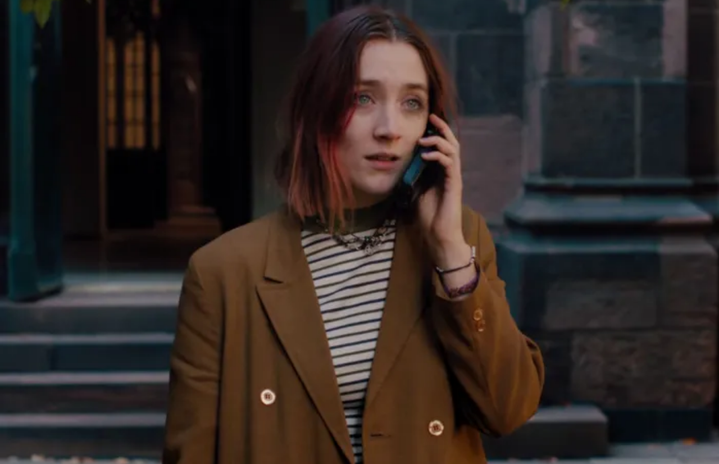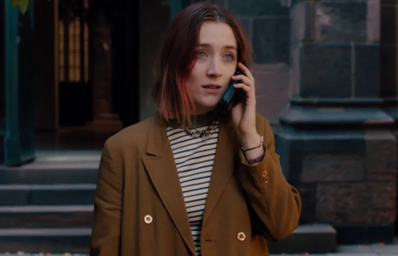Part I: Why are we so obsessed with vintage things?
Everything old is new again. Although everything fashion is slowly turning into a “Silicon Valley Style”- a mix of the drab minimalist industrialism, 60s psychedelic hipster, and Monica Belluci in Malena, vintage styles will always remain a part of style everywhere. We saw the Buick super convertible in Zindagi Na Milegi Dobara, a Fendi Baguette bag in the hands of every model, and Dr Martens adorned on everyone’s feet at the Phoebe Bridgers concerts.
The more I thought about it, the more I realised that after fashion trendsetters have their coming-of-age experience, they tend to somehow align with conventional societal norms. They start to gain an understanding of the mainstream or countercultural fashion choices of the previous generations, nowadays more with social media. Cultural preferences can converge at certain points. For example, after learning about iconic figures like the Beatles, the Rolling Stones, or Bob Dylan, one can grow to appreciate and love their music. However, this isn’t the core essence of vintage. Art is meant to be timeless, and things that are genuinely good tend to remain in style for generations.
The concept of vintage is like a passing trend; it arrives, ignites passion, and eventually fades away. With each new generation, the cycle of what is considered vintage is renewed. This is why we see a resurgence of interest in the 90s as Gen Z takes on a prominent role in consumer culture. This generation will soon shape the prevailing cultural norms, and the transition of power from one generation to the next will continue to happen at an increasingly rapid pace.
In a broader sense, vintage represents a declaration of affection for the past. As each new generation matures, they inevitably become similar to their own predecessors. This ageing process includes a certain degree of decline, along with the feelings of vulnerability and melancholy that come with losing youth. Vintage, in this context, is a celebration of what appears timeless but is actually just old. However, the appreciation for these old elements gives them a sense of dignity and tastefulness, making the process of growing old more acceptable. It’s an acknowledgement that ageing and decay can be embraced and even be desirable, thanks to our admiration for the vintage.
Part II: Boho yesterday and Boho tomorrow
But how exactly does this admiration play into fashion trends today? In the realm of fashion, 2023 could easily be labelled as a year marked by a lack of originality. Y2K fashion has taken centre stage, Nineties minimalism remains a beloved trend, and Boho styles have made a resurgence as if they never faded away. It’s a year where the fashion world is unabashedly borrowing from the styles of the past, styles that were once relegated to the shadows of fashion history, and it’s undeniably successful.
In an ancient kingdom, Bohemia, carefree, fluid fabrics were often worn with patterns and cuts as a symbol of unconventionality. Slowly, in the twentieth century, this evolved into switching from corsets and multiple layers of clothing to more unstructured and shapeless garments. This involved hobble skirts, harem pants and tunics that resembled lampshades. This style of clothing was associated with creative thinkers and wallflowers and hence was considered taboo to wear, especially for women. What trademarked vintage style today, however, was hippie clothing, reminiscent of Stevie Nicks from Fleetwood Mac and Woodstock in 1969. This involved airy, floral dresses, flared pants and silhouettes, moccasins, chunky belts with metallic embellishments, balloon sleeves and generally muted warm colours. This flowy trend slowly took a step back with the resurgence of dangerous diet culture, present everywhere in magazines in the 90s. Necklines got deeper and more figure-hugging, and layered skirts accentuated hips with studded belts and knee-high boots. From Kate Moss to the Olsen twins- layers were in again. Fast forward to 2022, this fluid, flowy silhouette has returned to the red carpets with vengeance. Brands like Alberta Ferretti, Chloé and Stella McCartney have returned to this “Boho” style, having had models like Gigi Hadid endorse their pieces.
In recent years, due to the constant pandemics and lockdowns, it’s not surprising that a carefree and unstructured aesthetic has become extremely popular. This trend combines well with the growing demand for vintage and sustainable clothing, making reworked and recycled styles a logical choice.
Boho 4.0, the fourth installation of a very successful fashion trend, retains the classic Boho elements, but the 2023 version is characterised by a whimsical yet clean look. It involves embracing a mix of vibrant colours, patterns, textures, and cuts while keeping the rest of the outfit simple.
For a more refined daytime look, you can pair a peasant shirt with straight-cut jeans. Instead of pairing a tiered maxi dress with a Hobo bag, consider using a belt bag for a more modern touch, as well as a designer crossbody bag. No matter how you decide to rock this style, be sure to accessorise without restraint, but make sure to leave that outdated rah-rah-Arctic- Monkeys-coded skirts in 2015.


